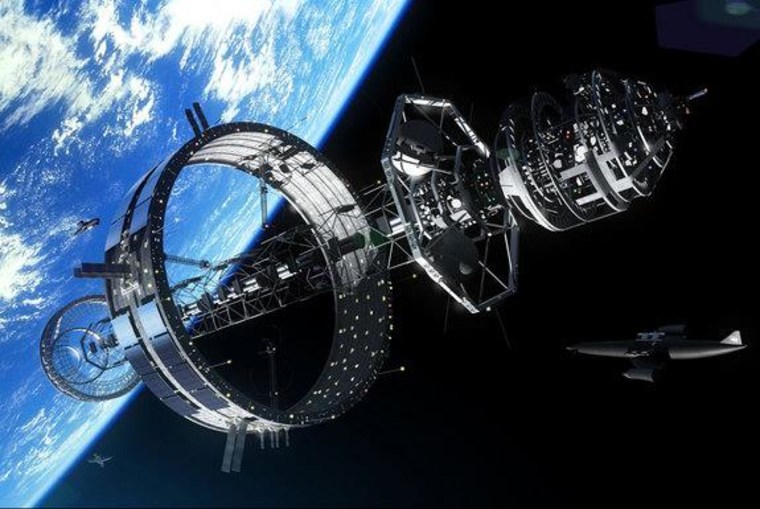If humanity ever wants to colonize a planet beyond the solar system, it's going to need a really big spaceship.
The founding population of an interstellar colony should consist of 20,000 to 40,000 people, said Cameron Smith, an anthropologist at Portland State University in Oregon. Such a large group would possess a great deal of genetic and demographic diversity, giving the settlement the best chance of survival during the long space voyage and beyond, he explained.
"Do you want to just squeak by, with barely what you can get? Or do you want to go in good health?" Smith said on July 16 during a presentation with NASA's Future In-Space Operations (FISO) working group. "I would suggest, go with something that gives you a good margin for the case of disaster."
In the past, researchers have proposed that a few hundred people would be sufficient to establish a settlement on or near an alien planet. But Smith thought it was time to take another look.
"I wanted to revisit the issue," he said. "It had been quite a long time, and of course we now know more about population genetics from genomics."
For his study, which was published in April in the journal Acta Astronautica, Smith assumed an interstellar voyage lasting roughly 150 years. This time frame is consistent with that envisioned by researchers at Icarus Instellar, a nonprofit organization dedicated to pursuing travel to another star.

Smith's calculations, which combine information from population genetics theory and computer modeling, point toward a founding population of 14,000 to 44,000 people. A "safe and well-considered figure" is 40,000, about 23,000 of whom would be men and women of reproductive age, Smith writes in the study.
This figure may seem "astoundingly large," Smith acknowledged, but he stressed that it makes sense.
"Almost no natural populations of vertebrates dip below around five to 7,000 individuals," he said during the FISO talk. "There are genetic reasons for this. And when they do go below this, sometimes they survive, but many times they go into what's called a demographic or extinction vortex."
-- Mike Wall, Space.com
This is a condensed version of an article that appeared on Space.com. Read the entire story here. Follow Mike Wall on Twitter @michaeldwall and Google+. Follow us @Spacedotcom, Facebook or Google+.
- The Top 10 Star Trek Technologies
- Star Trek's Warp Drive: Are We There Yet? | Video
- 10 Exoplanets That Could Host Alien Life
Copyright 2014 SPACE.com, a TechMediaNetwork company. All rights reserved. This material may not be published, broadcast, rewritten or redistributed.